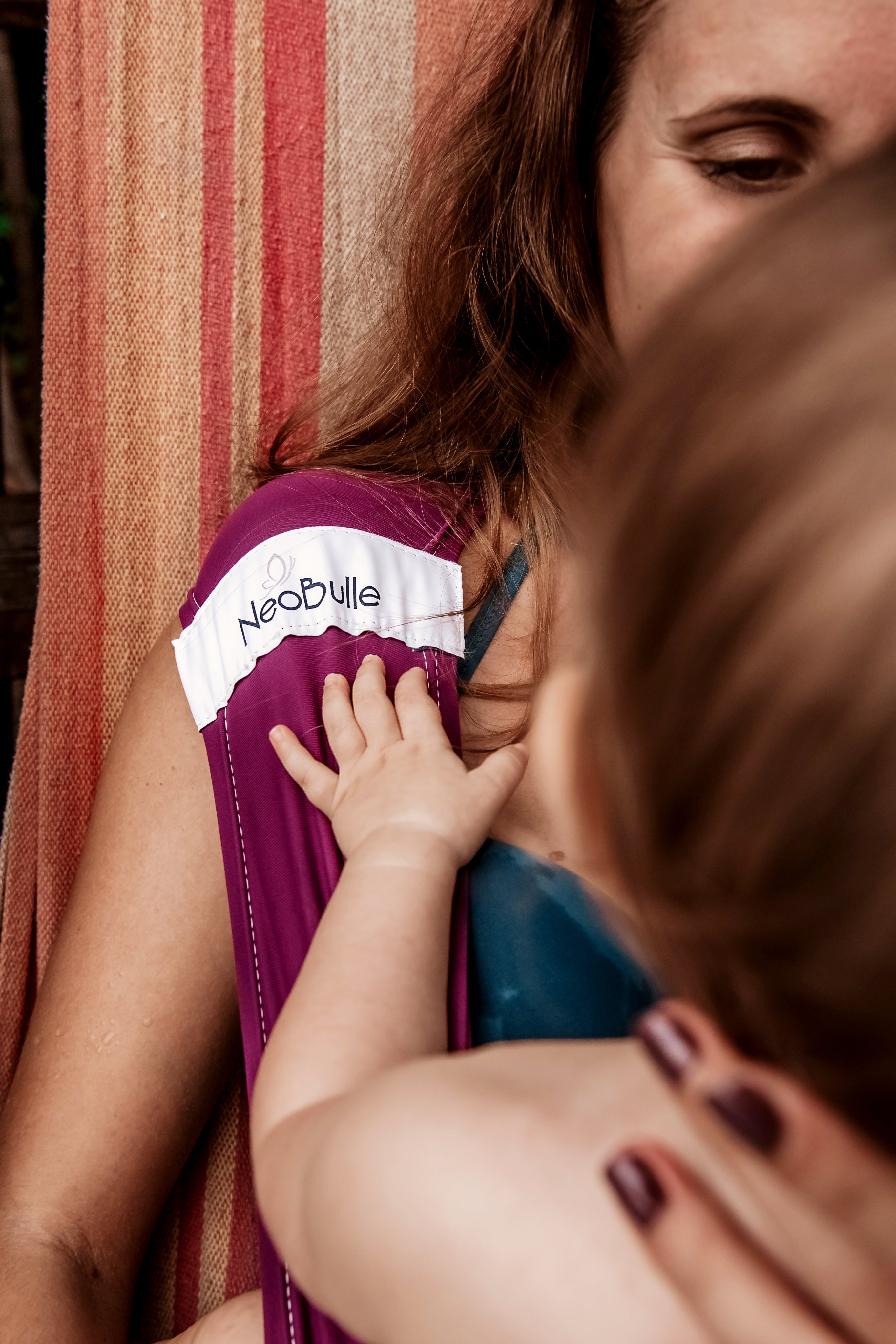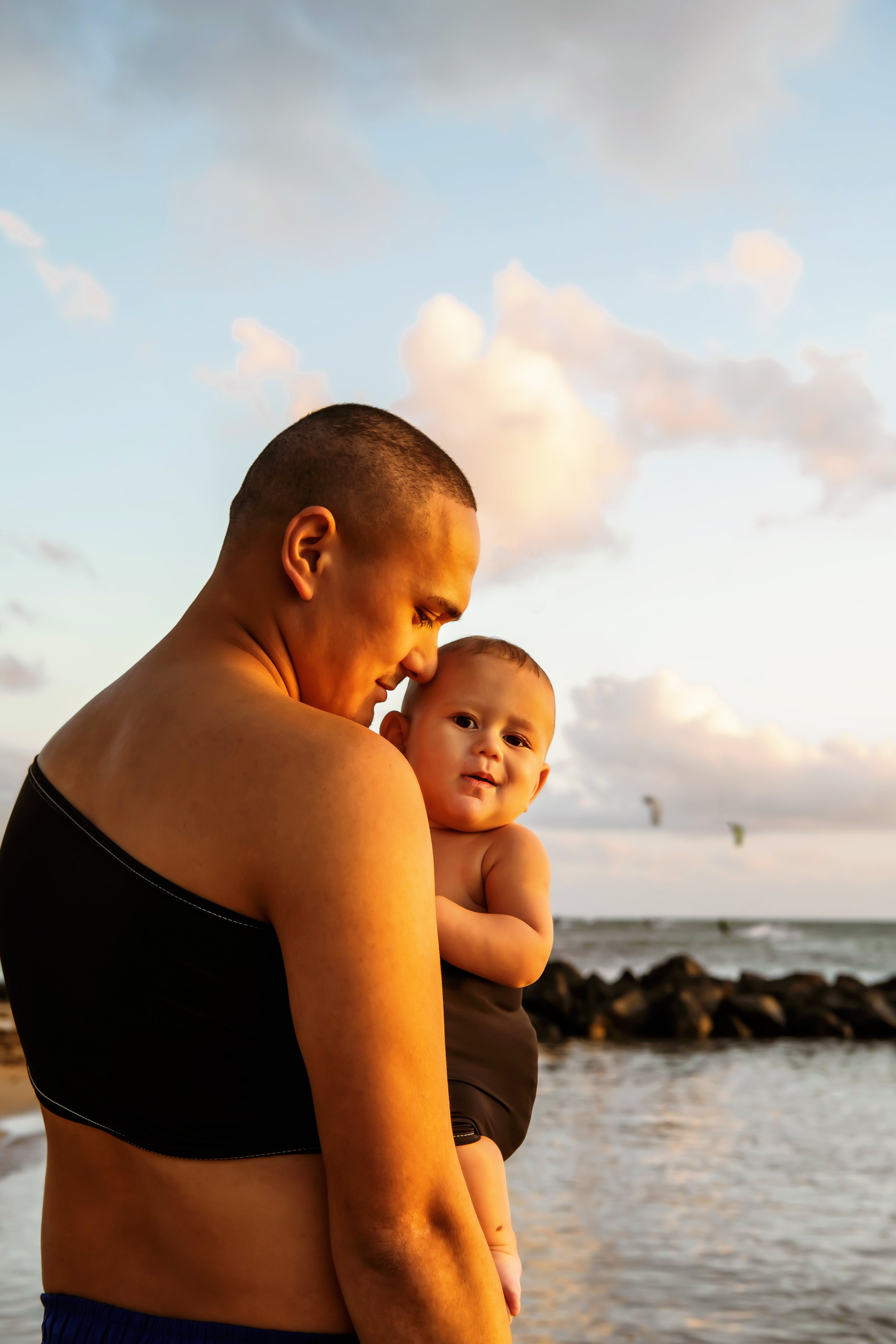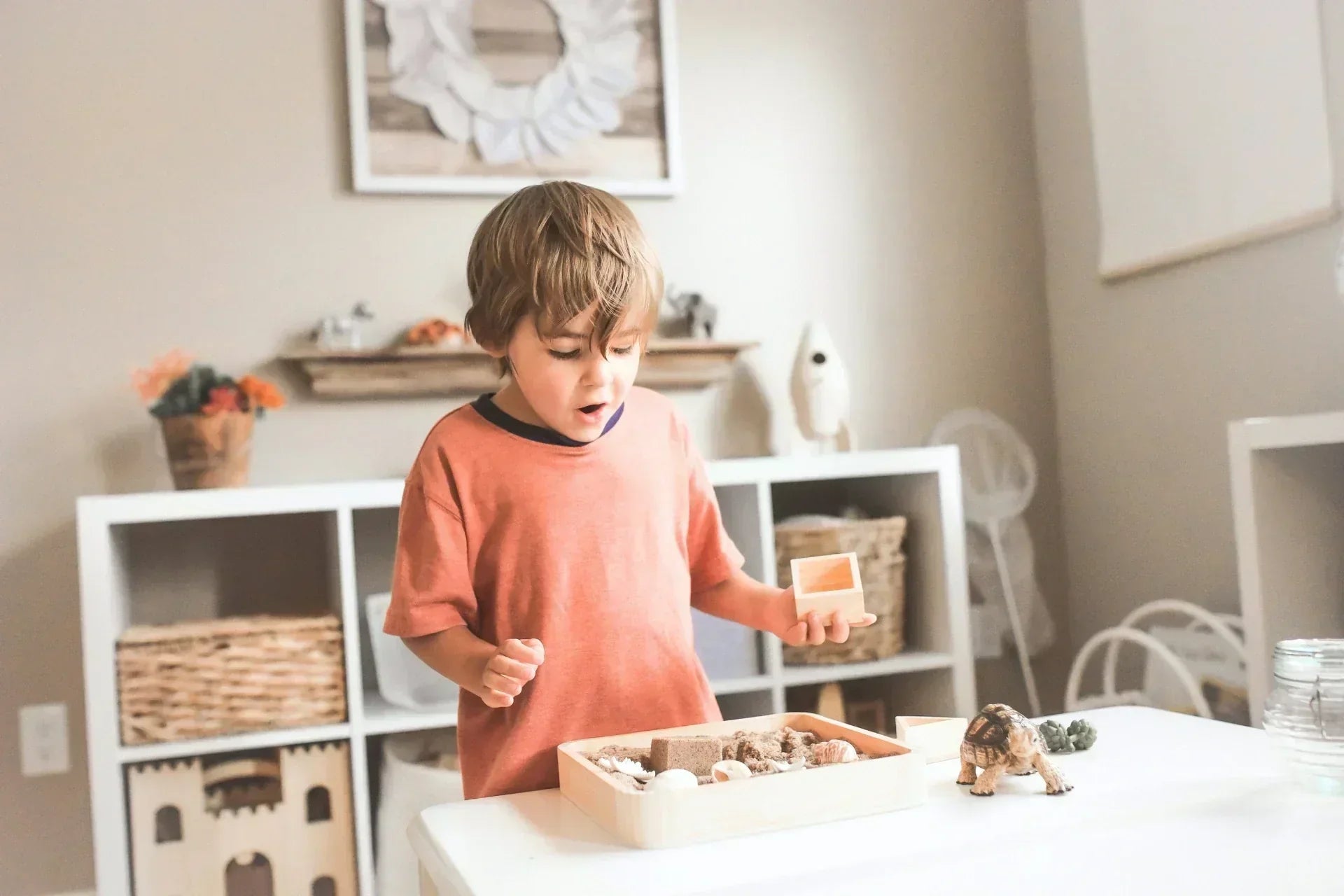1 - Already familiar sensations
Baby spent 9 months in his mother's womb in total symbiosis. Rocked by movements and in a constant temperature. A true bubble of well-being !
Carrying allows a transition that is gentle because it provides continuity from pregnancy. Baby will rediscover sensations already experienced that can give him a feeling of safety and serenity:
- Warmth
- Rocking
- The familiar scent of his parent
- The voices of his parents
- Vibrations
- The physiological position
- Proximity
- Feeling contained
It is therefore normal for baby to feel the need to be carried and in contact with his parents or attachment figures.
2 - Building attachment bonds
What is attachment? It is the emotional bond that connects baby with his attachment figures. Most of the time, it is with his parents that the baby creates his first attachment bonds.
Attachment with his baby develops throughout life and allows him to grow on different levels (relational, emotional, etc.).
Baby will create the attachment bond with the people who most often care for him and meet his needs. This helps him feel secure and gain confidence in himself.
This bond is naturally formed, but, for different reasons and situations, it can also take time to develop. For example : difficult delivery, premature birth, his personal history, life events…but it can happen even without complications. Do not hesitate to seek help from professionals around you if difficulties persist.
And carrying in all this? Exactly! Carrying can positively contribute to building the attachment bond! Do not hesitate to carry baby to discover him and take the time to create and strengthen this bond. Feeling his baby, his skin, his smell, his well-being and his calm when he is carried against you are moments that will help you connect with him and feel more confident in your new parental role.
"To detach well, the child must be able to attach well"
Bernard Golse, child psychiatrist.
3- Fewer tears
Why does my baby cry? Crying is the primary means of expression for the baby, so it is a matter of survival. Speech (or signs) comes only later. It is therefore normal for our baby to cry; he is expressing his needs: cuddles, food, drink, sleep, being changed... but also his emotions and feelings (cold, hot, pain…). A baby is biologically immature at birth and has a great need for proximity and contact with his attachment figures (most of the time their parents). Carrying will help soothe your child and make them feel secure. Baby will quickly calm down in carrying thanks to familiar sensations that will give them a sense of security. There will therefore be fewer tears and you will more easily know when they need something else.
Some babies cry a lot and others less! Perhaps it will take you some time at first to learn to decode their cries... It is also important to trust yourself, you know your baby better than anyone else. So, in most cases, you will be able to understand them! If the crying persists and seems abnormal, do not hesitate to consult a health professional.
Don’t remain isolated when faced with intense crying from your baby, pass the baton if you can, and if you are alone and it becomes too difficult, place your baby safely and go breathe and clear your mind in another room. It is normal to sometimes feel exhausted and overwhelmed by your baby’s cries.
Sometimes, crying can also be a sign of digestive discomfort (often observed in the first months of a baby’s life), and carrying will help through massage (belly against belly), movement, warmth, and comfort.
Evening is also more conducive to emotional release crying. Carrying will therefore help reduce crying.
4- Promotes Sleep
Sleep is a particularly challenging issue for parents. “Is your baby sleeping through the night?” Yes, your baby is SLEEPING through the night. A child's sleep is not the same as an adult’s. For example, their biological clock is set at 25 hours at birth, and it is only later that it matures to 24 hours. Likewise, their sleep cycles are not the same as ours.
Before your child can adopt the same sleep cycle as you, they will go through several stages during their early years. These stages will fluctuate and may include regression phases. As you understand, a child's sleep does not resemble ours, and therefore it is normal not to always understand their sleep needs.
Carrying and sleep?
In carrying, your child can fall asleep and stay awake as they wish. Carrying allows the baby to find their sleep rhythm and helps parents worry less. The feeling of security in carrying enables them to have peaceful sleep. Naps in carrying during the day do not hinder night sleep. Falling asleep will also be greatly facilitated, and you will be less exhausted when putting your child to sleep, and your baby will be soothed and secure.

5- Carrying & Breastfeeding
If you have chosen to breastfeed, carrying will be your ally. Indeed, beyond a mode of feeding, it is a way of life you have chosen, and carrying will go in this direction.
First of all, the proximity between mother and baby will promote the secretion of oxytocin: the hormone of breastfeeding and attachment.
The mother will more easily recognize the signals of hunger because she will be more sensitive to them thanks to proximity. On-demand breastfeeding will thus be facilitated.
The carried baby will find the same sensations as when at the breast (warmth, contact, heartbeat...). And will thus be able to gradually space out its feedings.
In some cases, the baby can even be breastfed in the carrying device, which can be practical in certain daily situations or when the baby has strong demands (growth spurts, for example). Breastfeeding can be discreetly done in public thanks to the carrying solution.

6 - Promotes psychomotor development
Close contact with a parent will allow the baby to develop its brain, which is under construction.
Did you know? In one year, the size of a human baby's brain will almost double!
Even though the human baby depends on its parent, it has several skills: sensory, emotional, motor...
Carrying helps to stimulate its sensory skills already developed in the mother's womb (smell, sight, hearing...). These sensory experiences in contact with its environment will contribute favorably to its development, while being secure in its carrier.
The baby actively participates in its carrying (in a physiological position) to hold onto its carrier during movements, changes of direction, etc., which helps it improve its sense of balance and exercise its tone in a developmental logic. For example, as a very young child, it will learn to hold its head, then its shoulders and back.
As it grows, it will be among the first to participate in carrying activities (meals, leisure activities...). This is an opportunity to give it a different visual field and discover odors, colors, memorize gestures...
Did you know? vision is the last sense to develop intrauterinely! At birth, the baby sees on average between 20 and 30 cm, the perfect distance to dive into the eyes of its carrier when the baby is carried!
7 - Advantage for the carrier
Let's now focus on the carrier! What are the advantages of carrying?
- Having free hands: being able to go about your daily activities with the baby snugly against you! Practical in everyday life and even more so when you have several children to look after.

8- A prevention tool
Carrying is an excellent prevention tool against plagiocephaly (skull deformation, commonly called "flat head"). Indeed, with carrying, you avoid prolonged pressure on the skull. Be careful not to restrict the baby’s head movements with the carrier! When the baby’s head is free to move, he strengthens his neck and back muscles and quickly learns to turn and support his head.
Carrying is also an excellent prevention against physiological gastroesophageal reflux, due to the upright position. It will also help babies suffering from pathological gastroesophageal reflux, which will be more relieved in a vertical position.
Regarding digestion, carrying reduces discomfort (sometimes called "colic"), thanks to warmth, belly massage against belly, and the feeling of security it provides.
From a motor perspective, the physiological position in the carrying solution is a very good way to promote the maturation of the baby’s hips.
« What delights a child is the happiness in which he bathes; if you wish him well-being, work on making yourself happy »,
Boris CYRULNIK, neuropsychiatrist.
Safety rules
- Discovered face, clear airways (the fabric reaches up to the nape of the neck)
- Physiological position: rounded back, knees raised higher than the hips, head aligned with the spine, hands near the face, respecting hip spacing.
- Snug fabric grip
- Exclusive vertical position
- Baby's belly against the caregiver
- Observe and monitor the baby (skin coloration, breathing, signs of well-being…)
- Appropriate clothing for the baby (keep in mind that a layer of fabric equals a layer of clothing) and the caregiver.
- Ensure proper hydration of the baby
- Adapt activities (no extreme sports) and do not carry if your alertness is altered (medications, psychoactive substances, drowsiness…)




